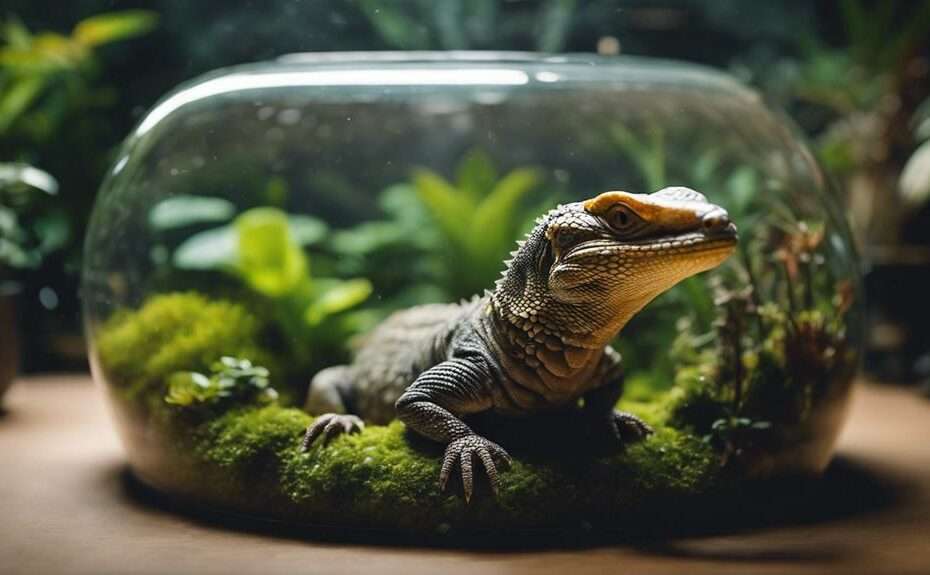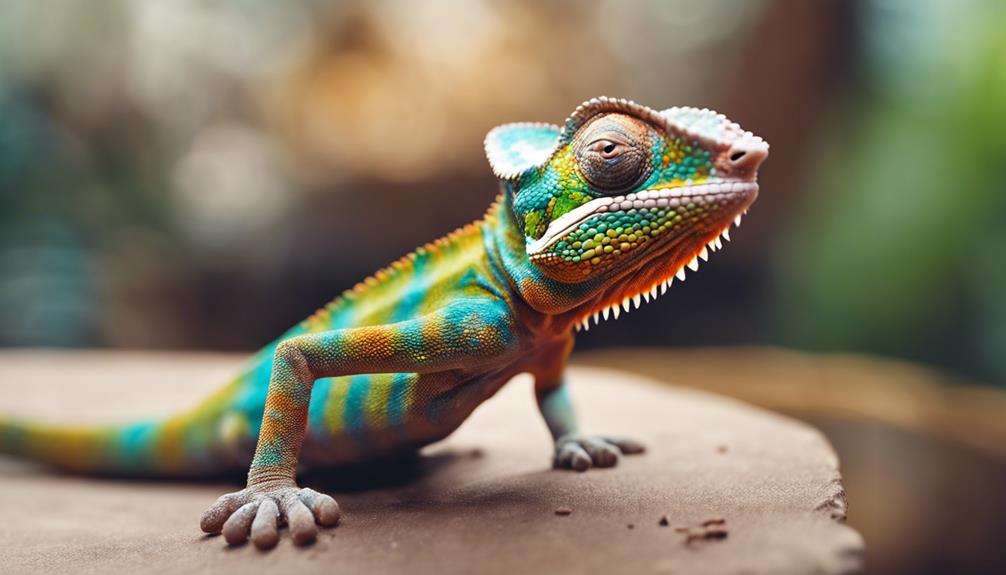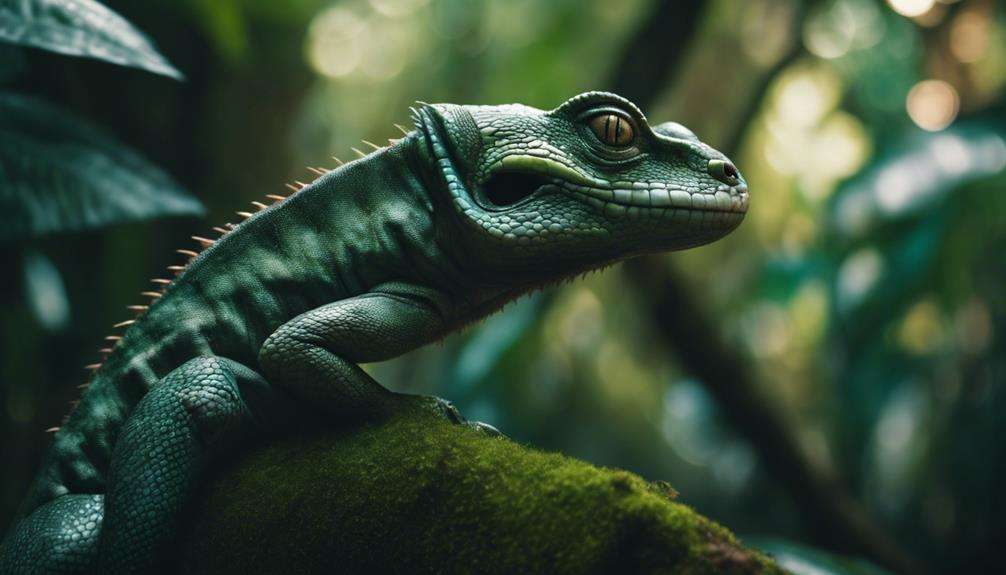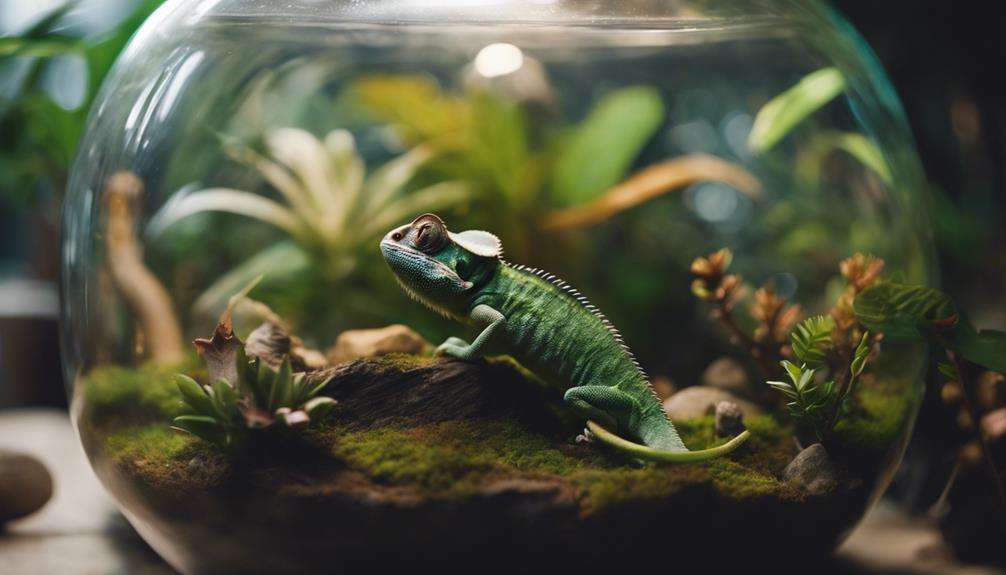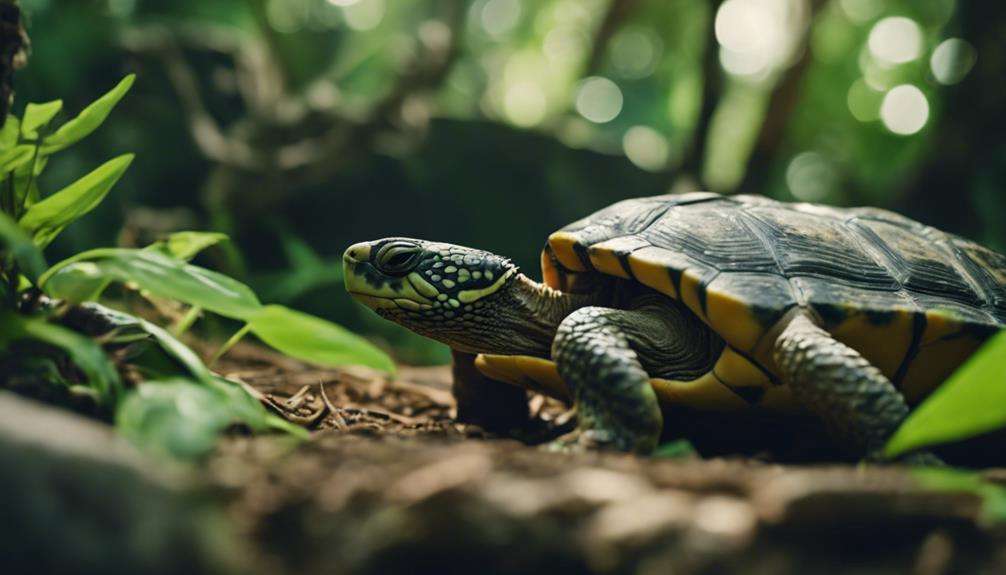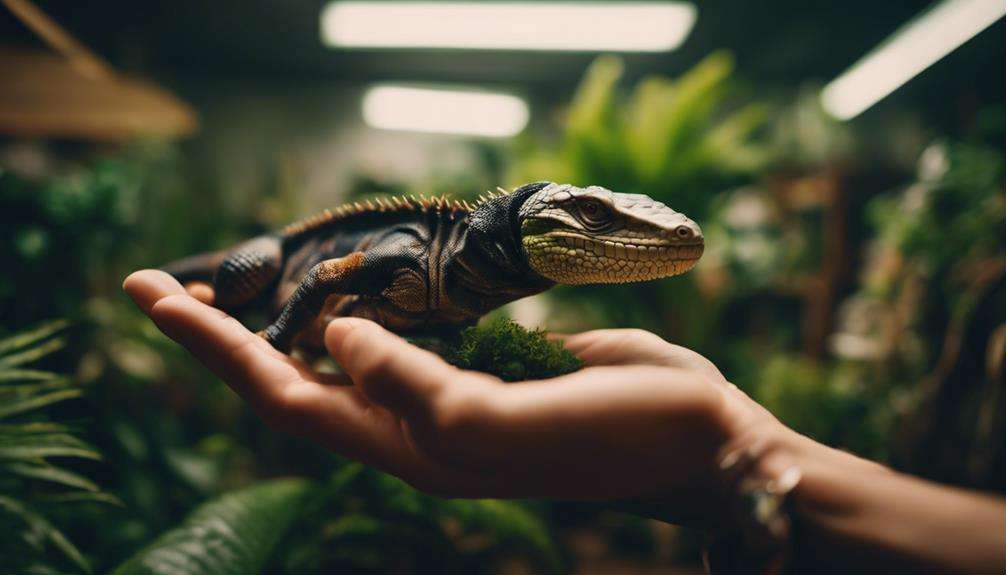If you're hesitant about taking on the challenge of more advanced reptiles, consider that their complex needs can be rewarding for seasoned keepers like yourself.
The intricate care requirements and behaviors of these reptiles offer a unique opportunity for experienced individuals to showcase their skills and knowledge.
As you navigate the world of exotic pet ownership, you'll find that these species not only demand a higher level of expertise but also provide a deeper connection and understanding that can only come with experience.
Key Takeaways
- Experienced keepers are needed for reptiles like Iguanas due to their large size and long lifespan.
- Specialized care is essential for reptiles like Chameleons with specific humidity, lighting, and temperature requirements.
- Reptiles such as African Rock Pythons require experienced handling due to their potential aggressiveness and size.
- Territorial behaviors and unique care needs make reptiles like Tokay Geckos ideal for experienced keepers.
Iguanas
Iguanas, particularly green iguanas, are highly recommended for experienced keepers due to their substantial size, specific dietary requirements, and intricate habitat needs. These reptiles can reach lengths of 6-7 feet and have a lifespan of over 15-20 years, demanding a long-term commitment from their caregivers.
Their specialized diet consists mainly of leafy greens, fruits, and vegetables, with the necessity of calcium and vitamin supplements to prevent metabolic bone disease. Green iguanas exhibit territorial behavior and may become aggressive if not handled correctly, underscoring the need for advanced handling skills in their keepers.
Creating an ideal habitat for green iguanas entails spacious enclosures equipped with UVB lighting, basking spots, and high humidity levels to replicate their natural tropical environment accurately. Providing a suitable environment is crucial for the overall well-being and health of these creatures. Therefore, meticulous attention to detail and adherence to their dietary and environmental needs are paramount for successful captive care of green iguanas by experienced keepers.
Ackie Monitors
Native to Australia, Ackie Monitors, also known as spiny-tailed monitors, are small to medium-sized monitor lizards that demand precise care and specialized husbandry practices from experienced keepers. These reptiles necessitate a spacious and intricate enclosure equipped with high temperatures, UVB lighting, and a designated basking area to regulate their body temperature effectively. Their diet comprises insects, small rodents, and various protein sources, requiring a diverse feeding schedule to meet their nutritional needs adequately. Ackie monitors can exhibit territorial behavior and aggression, emphasizing the importance of experienced handling and proper socialization techniques to ensure their well-being.
The active and inquisitive nature of Ackie monitors makes them fascinating pets for knowledgeable keepers who are willing to dedicate the time and effort needed to cater to their specific care requirements. Their captivating demeanor, coupled with the challenge they pose, attracts experienced keepers looking to engage with these unique reptiles on a deeper level.
Chameleon
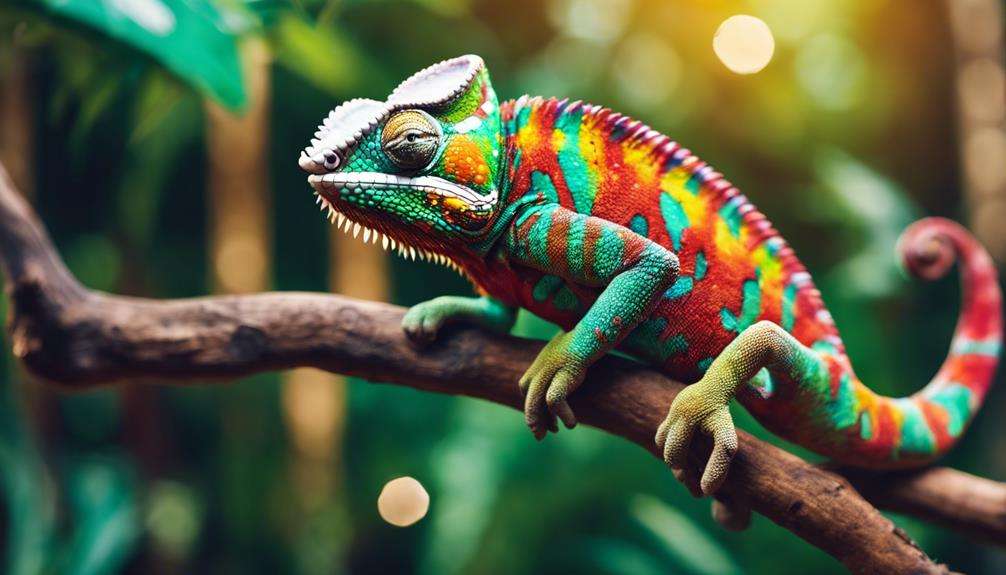
Chameleons require meticulous care, with specific attention to their humidity, lighting, and temperature needs.
Their color-changing ability is a complex interplay of mood, temperature, and light, rather than solely for camouflage.
When handling these delicate creatures, caution is advised due to their sensitive skin and stress susceptibility.
Chameleon Care Tips
Ensuring proper humidity levels, UVB lighting, and temperature gradients is essential for maintaining the health and well-being of chameleons in captivity. These reptiles require specialized care due to their arboreal nature. Meeting their dietary requirements is crucial; they feed on live insects and occasionally on plant matter.
When handling chameleons, be aware that they're easily stressed. Minimize interaction and handle them gently to avoid causing harm. Regular veterinary check-ups are recommended to monitor their health and detect any potential issues early on.
Handling Challenges
Handling chameleons presents a challenge due to their stress sensitivity and susceptibility to injury, requiring careful attention to minimize potential harm. Chameleons, known for their delicate care requirements, may not tolerate handling well, often becoming stressed or defensive.
Their fragile bodies are easily injured if not handled properly. Experienced keepers play a vital role in recognizing signs of stress and ensuring proper care to maintain the health of chameleons. Being aware of their specific humidity and temperature needs is essential, but equally important is understanding their behavioral cues to avoid overwhelming them.
Habitat Requirements
Properly setting up the habitat for a chameleon is crucial for their well-being and health. As an experienced reptile keeper, you must ensure the enclosure is tall with ample branches and foliage to facilitate climbing and hiding. Ventilation and humidity levels need to be carefully regulated to prevent respiratory problems.
Providing UVB lighting is essential for calcium metabolism and the overall health of your chameleon. Temperature gradients within the habitat are necessary for them to effectively regulate their body temperature. Remember, chameleons are sensitive to stress and require a quiet, undisturbed environment to thrive.
African Rock Python
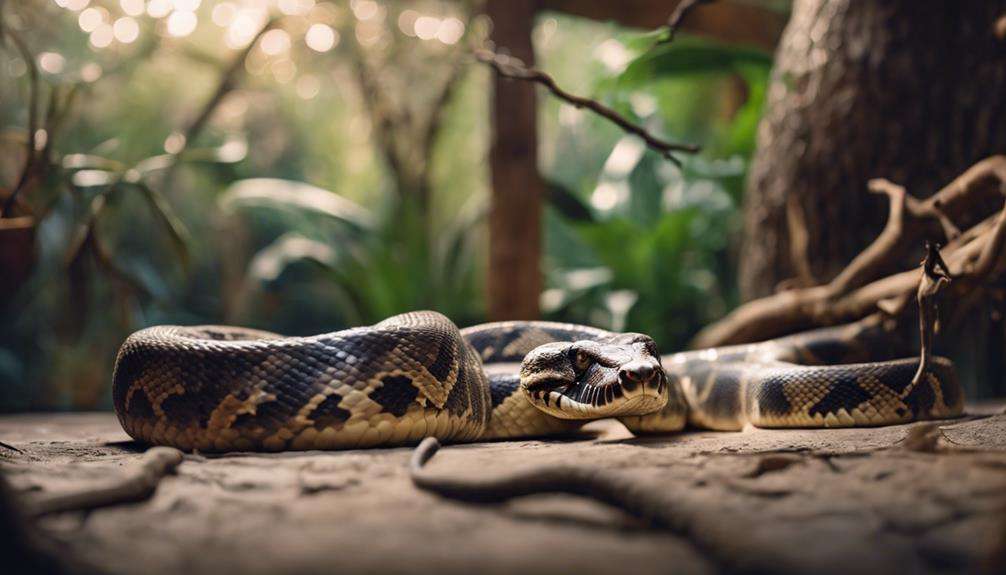
When considering the African Rock Python as a reptile to care for, it's crucial to acknowledge their immense size and strength. African rock pythons are one of the largest snake species, capable of reaching lengths of over 20 feet. They're known for their powerful constricting abilities and can be aggressive if not handled properly.
Below are key points to consider when caring for African rock pythons:
- Size: These pythons can grow to over 20 feet in length.
- Constricting Abilities: They possess powerful constricting abilities.
- Aggressiveness: African rock pythons can exhibit aggressive behavior if not handled by experienced individuals.
- Enclosure Requirements: They require a large and secure enclosure with proper heating and humidity levels.
- Safety Measures: Careful consideration of safety measures and precautions is essential when keeping African rock pythons due to their potential danger.
Due to their size, strength, and potential aggressiveness, African rock pythons are best suited for experienced handlers who can provide the necessary care and safety precautions.
Elephant Trunk Snakes
Considering the specialized care required for aquatic reptiles, the discussion now turns to Elephant Trunk Snakes, known for their unique feeding habits and aquatic nature. Elephant trunk snakes (Acrochordus javanicus) present a challenge for keepers due to their specific habitat requirements and feeding behavior.
As non-venomous constrictors, these snakes rely on their prehensile trunk-like snout to catch fish and other aquatic prey in the wild. In captivity, providing a suitable environment for these snakes involves maintaining precise water parameters and setting up a tank that mimics their natural habitat.
One of the main difficulties in caring for Elephant Trunk Snakes is their diet, which predominantly consists of live fish. This makes feeding them a complex task that demands dedication and experience. Experienced keepers familiar with aquatic reptile care are better equipped to handle the intricacies of meeting the needs of Elephant Trunk Snakes, making them more suitable for those with advanced reptile-keeping skills.
Tokay Gecko
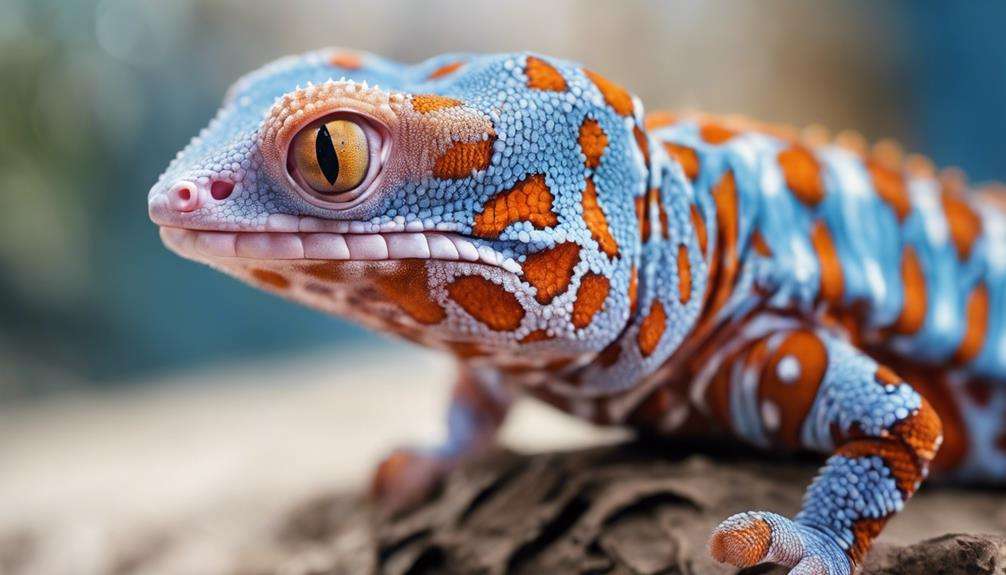
Tokay geckos exhibit distinctive blue and orange coloration, captivating the attention of seasoned reptile enthusiasts.
Their feisty disposition demands adept handling skills to navigate their potentially aggressive behavior.
As arboreal creatures, they thrive in tall enclosures furnished with ample climbing opportunities to simulate their natural habitat.
Handling Tokay Geckos
Handling Tokay geckos requires a high level of expertise due to their aggressive behavior and tendency to bite when threatened. These geckos aren't recommended for beginners due to their challenging nature.
When interacting with Tokay geckos, it's crucial to consider the following:
- Understanding their aggressive tendencies and readiness to defend themselves.
- Being cautious of their sharp teeth and strong bite force.
- Respecting their nocturnal behavior and adapting handling practices accordingly.
- Providing secure handling to prevent escape, as they're fast climbers.
- Using proper tools like gloves or tongs for safer interactions.
Experienced keepers are better equipped to handle the unique challenges that come with caring for Tokay geckos compared to more docile species like Crested geckos or Leopard geckos.
Tokay Gecko Behavior
With their unique vocalization and striking blue and orange coloration, understanding Tokay gecko behavior is essential for experienced keepers.
Tokay geckos are known for their aggressive nature, which can pose challenges for novice handlers. They exhibit territorial behavior, often vocalizing with a distinct 'to-kay' sound when feeling threatened or defending their space.
Due to their territorial instincts, handling Tokay geckos can be difficult, requiring experienced care to manage their potentially aggressive tendencies.
Their visually striking appearance, characterized by blue and orange hues, adds to their allure but also serves as a warning sign for their strong bite and defensive demeanor.
Novice reptile keepers are advised to approach Tokay geckos with caution and seek guidance from experienced individuals when caring for these reptiles.
Argentine Black & White Tegu
Argentine Black & White Tegus, renowned for their impressive size and intelligence, present a challenge to experienced reptile keepers due to their specific care requirements and potentially aggressive nature. These large lizards can reach up to 4.5 feet in length, requiring specialized care to thrive.
Here are some key considerations for keeping Argentine Black & White Tegus:
- Complex Enclosure Needs: These tegus need large enclosures with specific heating and humidity levels.
- Nutritional Balance: Their diet should consist of a variety of fruits, vegetables, and protein sources to ensure proper nutrition.
- Experienced Handling: Due to their territorial behaviors and occasional aggressiveness, experienced handling is crucial.
- Challenging Care Requirements: Their rapid growth and physical abilities make them challenging to care for.
- Suitable for Experienced Keepers: Argentine Tegus are best suited for keepers with prior experience in handling large and complex reptiles.
Mountain Horned Dragon
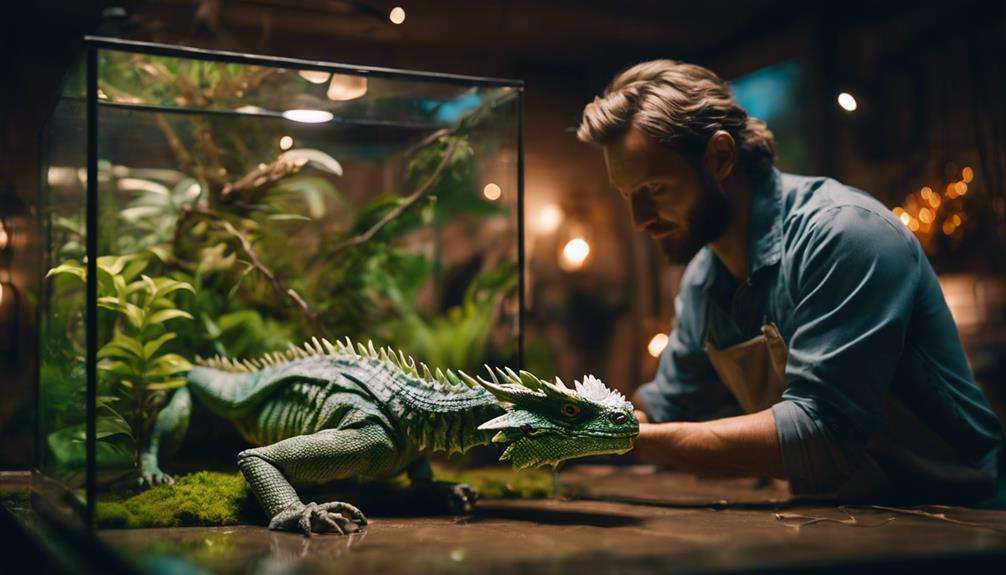
Are you prepared for the challenge of caring for the Mountain Horned Dragon, with its high level of expertise required due to specific environmental needs?
Mountain horned dragons, also known as Acanthosaura, are arboreal reptiles that demand a specialized habitat. These creatures thrive in tall enclosures that provide ample climbing surfaces and dense foliage for hiding. Originating from Southeast Asia, they're accustomed to warm and humid environments, necessitating careful temperature and humidity regulation in captivity.
Feeding these dragons poses another challenge, as their diet consists of insects, small vertebrates, and occasional fruits. Achieving a balanced nutritional intake is crucial for their well-being. Moreover, handling mountain horned dragons can be tricky due to their skittish nature and sensitivity to stress. This makes them more suited for experienced reptile keepers who can provide the necessary care and attention these unique creatures require.
If you're ready to delve into the intricate world of arboreal reptiles with specific environmental needs, the Mountain Horned Dragon might be the perfect challenge for you.
Frequently Asked Questions
Why Are Reptiles Better Suited for Life on Land?
Reptiles are better suited for life on land due to their land adaptations like scales, efficient lungs, and limb modifications. These features help them conserve water, navigate terrestrial environments, and regulate body temperature independently.
Why Are Reptiles the Best Pets?
Reptiles make the best pets for you due to their low maintenance, unique companionship, and fascinating behavior. They offer a different kind of bond, intriguing interactions, and a rewarding experience that you'll cherish.
What Reptile Enjoys Being Handled?
Reptile behavior varies greatly; some enjoy handling and socialization, while others prefer minimal interaction. Understanding reptile personalities and proper handling techniques are crucial for creating enriching experiences. Interactive play can strengthen the bond between you and your reptile.
What Is the Best Reptile to Keep as a Pet?
For the best reptile to keep as a pet, consider exotic species with advanced care needs and behavioral challenges. These unique reptiles require experienced keepers to provide specialized care, large enclosures, and understanding of their behaviors.
Conclusion
In conclusion, these reptiles are ideal for experienced keepers due to their challenging care requirements.
Did you know that the Reticulated Python can reach lengths exceeding 20 feet and weigh up to 250 pounds?
This statistic highlights the unique and specialized care needed for these impressive creatures, making them better suited for keepers with advanced skills and knowledge in reptile husbandry.
